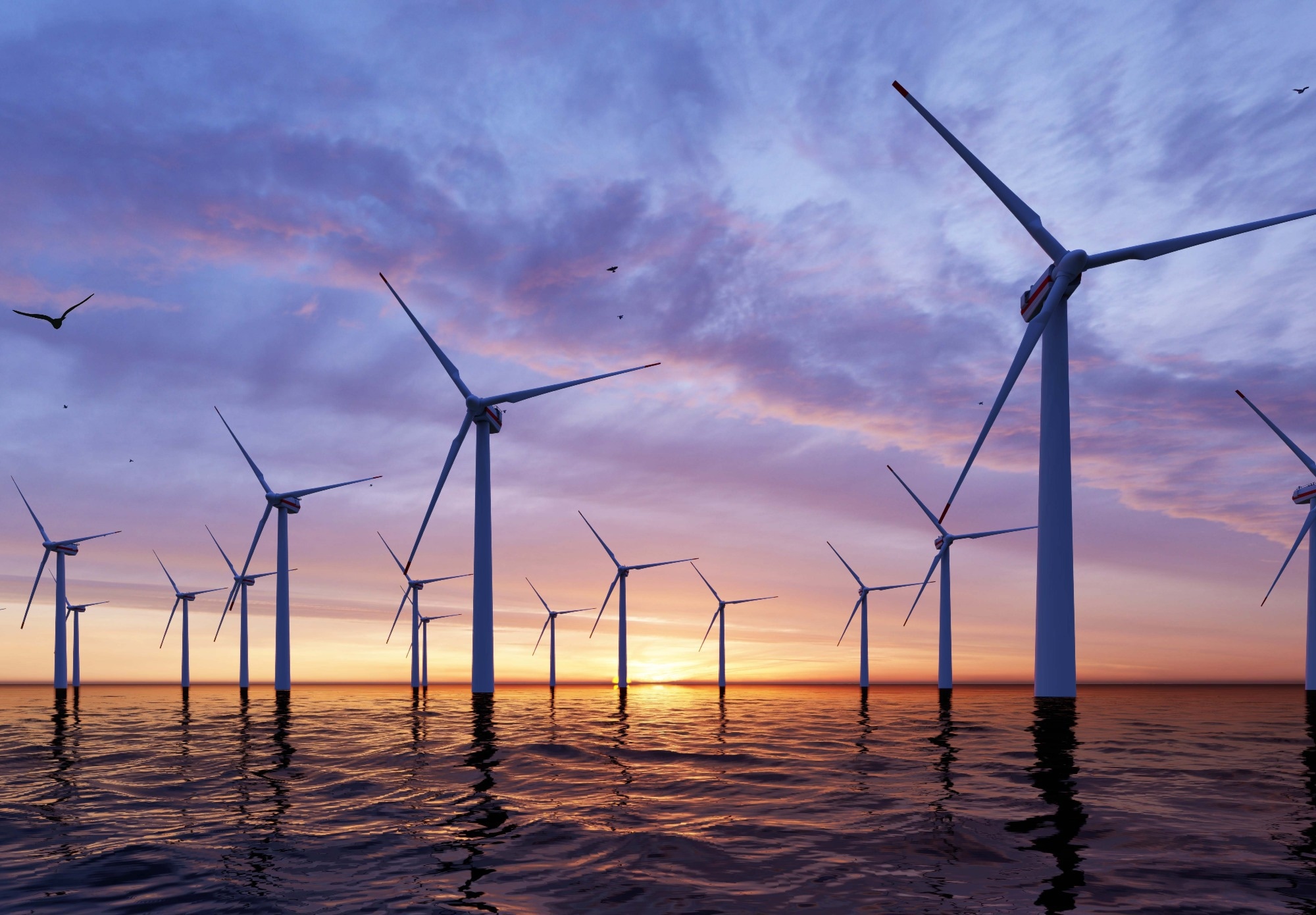In a paper published in the Journal of Marine Science and Engineering, researchers examined how the offshore wind energy industry has advanced to meet renewable energy goals and environmental targets. They focused on the challenges of increasing turbine size, improving power generation efficiency, minimizing environmental impacts, and deploying turbines in deeper waters.
 Study: Harnessing Machine Learning for Advancing Offshore Wind Energy. Image credit: ShutterDesigner/Shutterstock
Study: Harnessing Machine Learning for Advancing Offshore Wind Energy. Image credit: ShutterDesigner/Shutterstock
This comprehensive review highlighted the role of machine learning (ML) and artificial intelligence (AI) in addressing these challenges. ML is crucial in structural health monitoring, maintenance, wind farm layout optimization, power production forecasting, wake effect mitigation, and environmental impact assessment. These applications collectively enhanced offshore wind farm performance and increased energy output.
Background
The transformative power of ML and AI extends from enhancing renewable energy creation to improving the environmental sustainability of offshore wind farms. As governments and communities worldwide intensify their efforts to combat climate change, the role of ML in optimizing wind farm operations and minimizing environmental impacts becomes increasingly vital. The integration of ML techniques not only accelerates the transition towards cleaner energy but also underscores the importance of innovation in shaping a greener future.
Climate Forecasting and Environmental Impact
ML empowers the industry with data-driven findings, including accurate wind speed predictions and comprehensive assessments of ecological consequences. It accurately predicts crucial climatic data such as wind speed, direction, and wave patterns, maximizing power output and ensuring efficient turbine operation. Furthermore, ML enables the analysis of environmental impacts, including species distribution, habitat mapping, and collision risk assessment, facilitating the development of sustainable offshore installations that minimize ecological impact. Beyond these applications, ML also facilitates innovation by enabling autonomous navigation through wind farm areas. It further contributes to noise reduction in remote sensing data and the creation of comprehensive datasets for infrastructure identification purposes. These ML-driven advancements empower the offshore wind industry to navigate the complexities of climate prediction, environmental sustainability, and operational efficiency.
Integrating multiple ML techniques could consider the combined impacts of factors such as wind speed, species monitoring, wave forecasting, and habitat analysis on the marine ecosystem. These models offer invaluable perspectives for sustainable offshore wind farm development and management. The global demand for renewable energy continues to grow. The use of ML remains a vital tool in reshaping the offshore wind energy landscape and driving a more renewable and environmentally responsible future.
Enhancing Wind Energy Efficiency and Performance
Optimization is essential in wind energy generation, especially for wind farms. Neural networks are often integrated into optimization processes, performance modeling, and controller design to address challenges like wind power output variability and offshore wind turbine dynamics. Researchers have used various ML techniques to optimize wind farm layouts, predict power losses due to wake effects, and estimate power output for individual turbines. Additionally, reinforcement learning (RL) has been applied to control multi-terminal DC networks for offshore wind farm integration, and innovative approaches have been used to stabilize hybrid offshore wind and wave power systems. These ML-based methods promise to improve the efficiency and reliability of wind energy generation.
These approaches encompass the design of damping controllers for wind farms, reconstruction of thrust load histories for wind turbines, integration of wind and wave energy conversion systems, cost-effective optimization of wind jacket substructures, predictive modeling for wind farm performance, multi-objective optimization of mooring systems for floating wind turbines, advanced control methods for blade pitch regulation, and improved understanding and prediction of system behavior in critical conditions. These research efforts collectively enhance the efficiency and reliability of offshore wind energy generation.
Monitoring and Maintenance
The shift from onshore to offshore wind farms presents numerous challenges. The main challenge is the complexity of performing maintenance operations in harsh environmental conditions, resulting in extended periods of downtime. To mitigate these challenges, condition-based maintenance approaches leverage system condition information for decision-making while considering financial constraints and energy productivity goals. Additionally, integrating upper and lower floating offshore wind turbine platforms necessitates effective damage diagnosis and prognostic management methods to reduce operation and maintenance costs. Intelligent fault diagnosis systems, often utilizing ML, enhance efficiency, accuracy, and cost-effectiveness for offshore floating wind turbine generators.
Subsea cables play a critical role in offshore wind farms by connecting deep installations to the mainland power grid. However, their susceptibility to failure presents significant economic concerns, with a majority of insurance claims in the offshore wind energy sector attributed to subsea cable failures. ML techniques have been applied to strengthen the effectiveness and dependability of offshore wind farms. These applications encompass predicting failures and maintenance requirements and ensuring reliability in demanding oceanic conditions.
These techniques have found diverse applications, including predictive power output modeling. They have also been used for anomaly detection related to gearbox failures and for predicting structural responses to enhance turbine array layouts. Additionally, this has been instrumental in bearing fault diagnosis for offshore wind farm applications that showed high classification accuracy.
Conclusion
To sum up, incorporating ML techniques into offshore wind turbine implementation offers the prospect of revolutionary advancements in the field. The integration of ML techniques in offshore wind turbines has unlocked numerous possibilities. Future research directions include advanced predictive maintenance, intelligent control systems, multi-physics, and hybrid ML modeling, enhanced environmental impact assessment, the fusion of data types, uncertainty quantification, explainability, and interpretability, real-time decision support, and socio-economic impact analysis. These aspects can further elevate the efficiency, reliability, and sustainability of offshore wind energy systems.